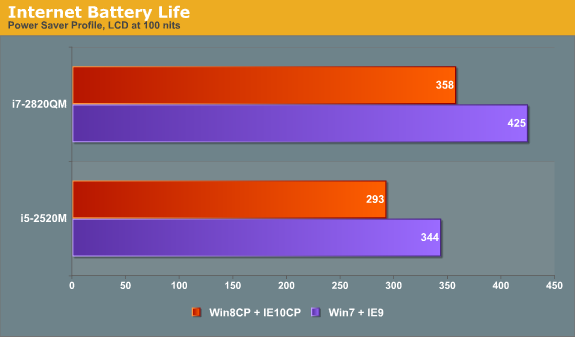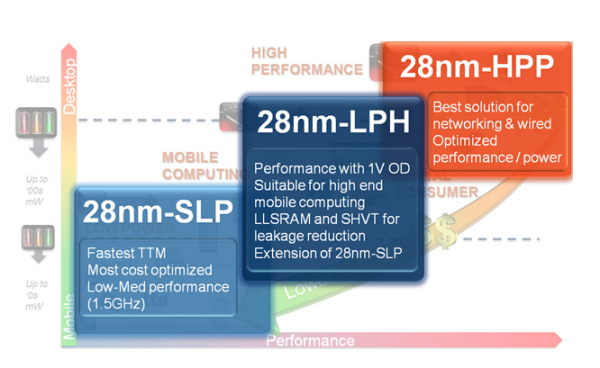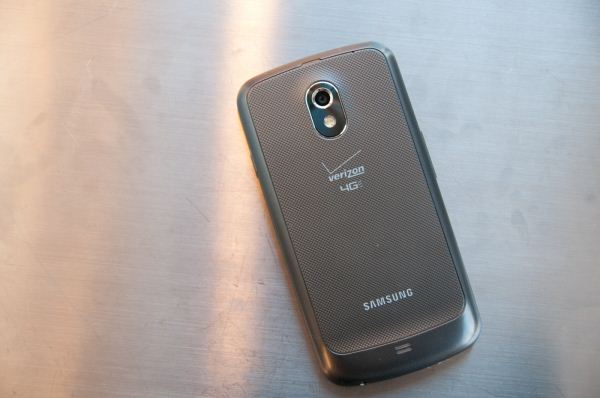Results 1,661 to 1,670 of 12096
Thread: Anandtech News
-
03-01-12, 12:50 AM #1661
Anandtech: XFX 1000W Pro Series 80 Plus Platinum
We've recently tested the first 80 Plus Platinum PSUs to hit our labs, courtesy of Seasonic and Enermax. Both were good if expensive PSUs, and next up on the test bench is a Platinum series that's sold by a brand without their own PSU factory: XFX. They sent us their newest product, the Pro Series 80 Plus Platinum Black Edition, which sets its sights on the high-end of the market. XFX has created an interesting casing with some unusual elements, but we need to find out how good this model acutally is.
While efficiency is all the marketing rage in the world of PSUs, we should keep in mind that many manufacturers are trying to reach 80 Plus Platinum levels using some "tricks". As we noted in our Seasonic article, there are various routes to higher efficiency, like removing resistors that may fill other roles. Shunt resistors for example transform some of the power into power loss when current flows through it, since there is a voltage drop. That's actually their job as they measure and prevent overcurrent in an indirect way. On the following pages we will show how XFX reached the requirements for 80 Plus Platinum (90%/92%/89% efficiency at 20%/50%/100% load), and we'll also discuss the ODM and how well the XFX model fares in an increasingly crowded market.
More...
-
03-01-12, 01:20 AM #1662
Anandtech: Windows 8 Consumer Preview: A Quick Look at Battery Life
With each new operating system in recent history, Microsoft has promised better battery life. We tested this back in the early days of Windows 7 and found that while Vista was generally a step back relative to XP, Windows 7 fixed much of what was wrong and even managed to beat XP in several tests. With the Windows 8 Consumer Preview now available, we thought we’d run a quick test on a laptop to see if things have changed much. Let’s just get this out of the way, shall we?
Okay, that’s a pretty poor showing, but what’s really going on here? We’re using the same Sandy Bridge laptop that we tested back when SNB first launched, a Compal unit with an i7-2820QM processor. So the hardware hasn’t changed, but battery life is much worse right now—and that last part is important: right now. We did a few tests of battery life with the Windows 7 preview and it didn’t look that great, but drivers and optimizations weren’t finalized, and Windows 8 CP is definitely in that same category. But there’s more to the story than just Windows 8.
As part of the Windows 8 CP experience, we’re also given the privilege of running the Internet Explorer 10 Consumer Preview (IE10CP). As we’ve noted in the past, the choice of browser can certainly have an impact on battery life, and that likely goes double when we’re looking at beta software for the OS and browser. I also performed an in-place upgrade from Windows 7, so it’s possible that could negatively impact battery life as well.
I've only had a chance to run the battery drain test once so far, so consider the above results very preliminary. I'm going to test it again, as well as going back and retesting with Windows 7 (and IE9) to see if there's any other changes. While I continue to look into battery life over the next few days to see if perhaps I missed something, for now it doesn’t look like Win8 CP is going to do anyone any favors in that area.
And just as an aside, I know that Windows 8 isn’t final by any stretch of the imagination, but while the UI seems like it would work great on a tablet I’m ready to go on record as saying it sucks for traditional desktop and laptop users. Without a touch interface, Metro feels weird at best and downright awful at worst. What’s more, getting a touchscreen for a desktop or laptop isn’t actually something I’m clamoring for. Does using a 24” or 30” touchscreen on my desktop sound enjoyable? Not at all, and a 15” laptop touchscreen wouldn’t be much better. Maybe it would help me build up a bit of arm strength, but that’s about the only upside. Add on fingerprints—a personal pet peeve that smartphones and tablets still suffer from—and I’m more than happy to stick with the “boring” old Start Menu. That’s just my initial impression of course; anyone else have similar—or different—feelings after playing around with the Win8 CP?
More...
-
03-01-12, 03:10 AM #1663
Anandtech: Toshiba Announces Excite 10 LE, Shipping March 6th
At CES this year, we got a chance to go hands on with the Excite, Toshiba's latest and greatest Android slate. To recap, it's an OMAP4 device that features a 10.1" 1280 x 800 IPS display and measures in at a downright anorexic 7.7" thick. At the time, we were given the price points Toshiba planned to hit, but no firm details as to availability or what OS it would ship with.
 Today, Toshiba announced that the Excite, formally titled the Excite 10 LE for the US market, will be available for purchase from retailers starting on March 6th, next Tuesday. Pricing is $529.99 and $599.99 for the 16GB and 32GB models respectively, as was known previously.
Today, Toshiba announced that the Excite, formally titled the Excite 10 LE for the US market, will be available for purchase from retailers starting on March 6th, next Tuesday. Pricing is $529.99 and $599.99 for the 16GB and 32GB models respectively, as was known previously.
Since CES, the clock speed of the OMAP 4430 SoC has been raised to 1.2GHz. Unfortunately, Toshiba has decided to launch the Excite with Honeycomb, promising an upgrade to Ice Cream Sandwich later in the spring. We demoed the Excite at CES running ICS, and it seemed relatively stable then, so it's a bit disappointing to see the shipping device on Honeycomb.
We're on the list for an evaluation unit of the Excite, and we'll work to get the review out as soon as possible.
More...
-
03-01-12, 03:10 PM #1664
Anandtech: TI Demos OMAP5 WiFi Display Mirroring on Development Platform
On our last day at MWC 2012, TI pulled me aside for a private demonstration of WiFi Display functionality they had only just recently finalized working on their OMAP 5 development platform. The demo showed WiFi Display mirroring working between the development device’s 720p display and an adjacent notebook which was being used as the WiFi Display sink.
TI emphasized that what’s different about their WiFi Display implementation is that it works using the display framebuffer natively and not a memory copy which would introduce delay and take up space. In addition, the encoder being used is the IVA-HD accelerator doing the WiFi Display specification’s mandatory H.264 baseline Level 3.1 encode, not a software encoder running on the application processor. The demo was running mirroring the development tablet’s 720p display, but TI says they could easily do 1080p as well, but would require a 1080p framebuffer to snoop on the host device. Latency between the development platform and display sink was just 15ms - essentially one frame at 60 Hz.
The demonstration worked live over the air at TI’s MWC booth and also used a WiLink 8 series WLAN combo chip. There was some stuttering, however this is understandable given the fact that this demo was using TCP (live implementations will use UDP) and of course just how crowded 2.4 and 5 GHz spectrum is at these conferences. In addition, TI collaborated with Screenovate for their application development and WiFi Display optimization secret sauce, which I’m guessing has to do with adaptive bitrate or possibly more.
Enabling higher than 480p software encoded WiFi Display is just one more obvious piece of the puzzle which will eventually enable smartphones and tablets to obviate standalone streaming devices.
More...
-
03-01-12, 03:40 PM #1665
Anandtech: AT&T Sets Unlimited 3G Data cap to 3GB, 4G LTE Unlimited cap to 5GB
AT&T recently started taking heat as subscribers with grandfathered unlimited data plans saw their downstream throughput throttled after consuming just over 2GB on AT&T's 3G HSPA+ network. The primary complaint at that time was that it was illogical for AT&T to set the glass cap at 2GB (as derived by the 'top 5% of data users per market' metric) when the same $30/month buys you at least 3GB on another DataPro plan. It seems as though AT&T has taken that criticism to heart and today announced that it is setting the throttling cap uniformly at 3GB for 3G HSPA+ subscribers, and 5GB for 4G LTE subscribers.
After you hit this cap, data rates on the downstream slow to around 256 kbps on 3G, and hopefully substantially more for 4G LTE throttled subs. AT&T has already sent out some notification SMSes to customers who went over 3GB of use on the previous billing cycle, as shown above.
Source: AT&T
More...
-
03-02-12, 12:40 PM #1666
Anandtech: AMD Executes on Promise of Agility, Intends to Acquire SeaMicro for $334M
At its 2012 Financial Analyst Day, AMD mentioned a conscious shift towards being a more agile company. Wanting a bigger piece of the high margin server market, AMD is willing to consider alternate architectures (largely believed to be ARM based) to go after disruptive holes in Intel's strategy. AMD also wants to leverage its GPU advantage in servers, although outside of the HPC market that's still a while away. Two days ago AMD gave the first example of its more aggressive, agile pursuit of server market share with an announcement of the intent to acquire SeaMicro for $334M.
We first met SeaMicro two years ago when it introduced the SM10000. Built out of a massive array of 512 Intel Atom CPUs, the original SM10000 was designed to deliver great performance at much lower power than traditional servers. Similar to a trend we've seen in client computing, not all server workloads demand the absolute latest innovations in microprocessors. There's a category of server applications that can be better served by a lower class of good enough computing, delivering much better power efficiency. Content web servers, similar to what we use at AnandTech, don't present a hugely complex workload but they do see lots of threads and have largely variable performance requirements. SeaMicro's technology reduces power consumption by using lower power CPUs and highly power optimized motherboards. Both SATA and Ethernet are virtualized and handled by SM's custom ASIC, as is connection between all of the servers in the chassis (we discussed the architecture in greater detail here). You can think of the SM10000 as a single box cloud server for content sites. As power consumption in the datacenter is one of the greatest expenses, matching hardware to software workloads is very important.
Intel already announced intentions to pursue the micro-server market in 2012 with a special sub-10W Xeon SKU, likely based on an Atom derived architecture. AMD already demonstrated its Bobcat core could be easily competitive with anything Atom based, making micro-servers an easy target for AMD in the near term. Intel expects the micro-server market to grow to be ~10% of the total server market by 2015. With the right product play, AMD could stand to achieve a bigger share of that market than it has in the overall server space.
The acquisition of SeaMicro makes sense but it does mark a significant shift in the way AMD has behaved as a player in the microprocessor space. By acquiring a server company AMD is taking a step towards vertical integration, something which has definitely become more popular in recent years. Obviously AMD isn't going to turn into a server manufacturer, but a targeted acquisition like this is indicative of the strategy AMD laid out last month.
SeaMicro currently ships three server designs, all of which use Intel CPUs (two use Atoms, one uses low-voltage SNB Xeons). You can expect AMD to eventually transition these systems to Opterons and perhaps introduce a Bobcat based version at some point in the future.
Gallery: AMD Executes on Promise of Agility, Intends to Acquire SeaMicro for $334M


More...
-
03-04-12, 08:20 PM #1667
Anandtech: GlobalFoundries Granted Independence, Acquires Remaining Stake from AMD
When AMD originally spun off its foundry business in 2008, the resulting Foundry Company (as it was called back then) was 55.6% ATIC owned and 44.4% AMD owned. Since then the Foundry Company has been rebranded Global Foundries and has been on a march towards independence. Plans for additional fabs and the acquisition of Chartered Semiconductor both strengthened GF as a player in the foundry space. A closer relationship with ARM and its partners has also been a key element of GF's strategy.
AMD has been divesting itself from Global Foundries over the past few years and today announced that it has aquired the remaining shares of the company from AMD (approximately 14% of the company). Global Foundries is now completely independent of AMD, and AMD is now a regular partner/customer of GF's.
More...
-
03-04-12, 11:10 PM #1668
Anandtech: AMD Radeon HD 7870 GHz Edition & Radeon HD 7850 Review: Rounding Out South
In 2009-2010, AMD launched the entire 4 chip Evergreen series in 6 months. By previous standards this was a quick pace for a new design, especially since AMD had not previously attempted a 4 chip launch in such a manner. Now in 2012 AMD’s Southern Islands team is hard at work at wrapping up their own launch with new aspirations on quickness. Evergreen may have launched 4 chips in 6 months, but this month AMD will be completing the 3 chip Southern Islands launch in half the time – 3 chips in a mere 3 months.
Today AMD is taking the wraps off the final piece of the Southern Islands puzzle: Pitcairn. The middle child of the family, it will be the basis of AMD’s $250+ enthusiast segment Radeon HD 7800 series. We’ve seen AMD capture the high-end with the 7900 series and struggle to control the mainstream market with the 7700 series, but how does the 7800 series fare amidst AMD’s lead in deploying 28nm GPUs? Let’s find out.
More...
-
03-05-12, 08:00 PM #1669
Anandtech: Android Market App size raised to 4GB from 50MB
If you've tried any of the bigger, beefier Android games, chances are good you likely have come across an initial asset preload method which goes something like this: The application APK downloads and installs from the market, then on first launch, the app reaches out over HTTP and downloads assets over the web which it locates in /sdcard. A good example of this behavior is GTA III which does exactly the above.
Back at Google I/O 2011, Google announced that it would eventually allow developers to host up to 4GB of assets on the market. Today, the Android Market rules are changing to allow exactly that. Developers can now host assets on the Android Market (as opposed to rolling their own hosting and storage, out of pocket), and Market now provides a streamlined means for these assets to be preloaded. Application APK size remains limited to 50MB, however, developers can now include two 2GB expansion stores in whatever format they choose, which are stored in shared storage on the client device. On newer devices, the expansion files are downloaded automatically after the main APK, and on older devices developers can use a Google-supplied library to manage the download.
This brings total application size up to 4GB of assets + 50 MB for the actual APK. Google has more details about the APK expansion files up in their developer's guide as well.
Source: Android Developers Blog
More...
-
03-06-12, 07:24 AM #1670
Anandtech: ZyXEL Launches Cloud-Enabled HD IP Surveillance Cameras
ZyXEL announced the retail availability of the two latest members in its IP camera lineup today. With 'cloud' being all the craze it is right now, the units carry enough features to warrant them being described as 'cloud-enabled'. The video from these cameras can be viewed on any device anywhere with a connection to the Internet.
ZyXEL IP4605NZyXEL IP3605NThe two new cameras, IP3605N and IP4605N come with street prices of $99 and $185 respectively. The latter is a PTZ (Pan-Tilt-Zoom) model. Purely from the construction of the hardware, the IP3605N appears to be a rebrand of the Compro IP70 that we reviewed last July and the IP4605N appears to be a rebrand of the Compro IP540 that we reviewed in October 2010. However, the backend and the firmware appear to be different. While the Compro units came in with support for a cloud backend through Seedonk's services, ZyXEL seems to have its own custom services in iSecurityPlus. This service also provides online recording and notifications with a $5.99 monthly subscription service. Live viewing and other basic features are free similar to the Dropcam model. The camera models are also substantially cheaper than purchasing them directly from Compro Technologies.
The cameras' Compro roots were revealed in the technical specifications of the product which include the ComproView software to manage multiple feeds simultaneously. That said, it will be interesting to see how the firmware features of the ZyXEL and the Compro models compare with each other, and whether the difference in price is a result of some firmware features which are lacking in the ZyXEL units.
For full technical details of the products, the Technical Specs tabs of the IP3605N and IP4605N on this page can be perused. ZyXEL's press release can be found here.
More...
Thread Information
Users Browsing this Thread
There are currently 8 users browsing this thread. (0 members and 8 guests)






 Quote
Quote

























Bookmarks